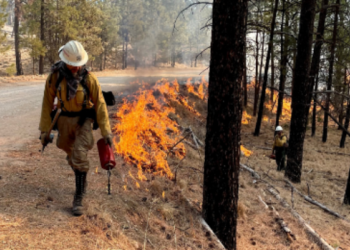Welcome to Lincoln National Forest
The Lincoln National Forest spans 1.1 million acres of southeastern New Mexico, encompassing three majestic mountain ranges: Sacramento, Guadalupe, and Capitan. With elevations ranging from 4,000 to 11,500 feet, the forest boasts diverse ecosystems, from Chihuahuan desert to sub-alpine forest.
Visitors can enjoy a wide range of outdoor activities, including hiking, picnicking, mountain biking, camping, and dirt bike riding. The forest is also home to Smokey Bear, the iconic symbol of forest fire
Travel Essentials: Plan Your Visit
Places to Stay

From the desert to the mountains, discover your next destination on the Lincoln National Forest.Find recreation, camping and cabins.
Find Your Way

We have online interactive maps, downloadable maps, print and waterproof maps - whatever format you prefer to prepare for your trip.
Passes for a Year or Day

You may need to pay a fee depending on which sites you visit. Save money with a recreation pass.
Get a Permit

Some activities on the forest require a permit like firewood collection, guided adventures, recreation events, filming, weddings, easements and other events.
Find Adventure

Check out some of our more epic recreation locations, side adventures, and wilderness areas!
Hit the Trail

The Lincoln has so much to offer! Check out all our recreational opportunities here.
Fire Management and Resources
Fire Restrictions and Current Incidents

Your one-stop for fire information on the Lincoln National Forest including fire restrictions, current and prescribed fires, emergency information and prevention.
Sacramento Ranger District July Prescribed Burn

The Lincoln National Forest is planning prescribed fire operations. Named the Jeffers Piles, we estimate this prescribed fire project to take place on the 5th, 6th and 7th as weather conditions allow. We use prescribed fire to reduce overgrown vegetation, this helps to protect local communities, infrastructure and natural resources from extreme, high-severity wildfires.
For More information CLICK HERE.




